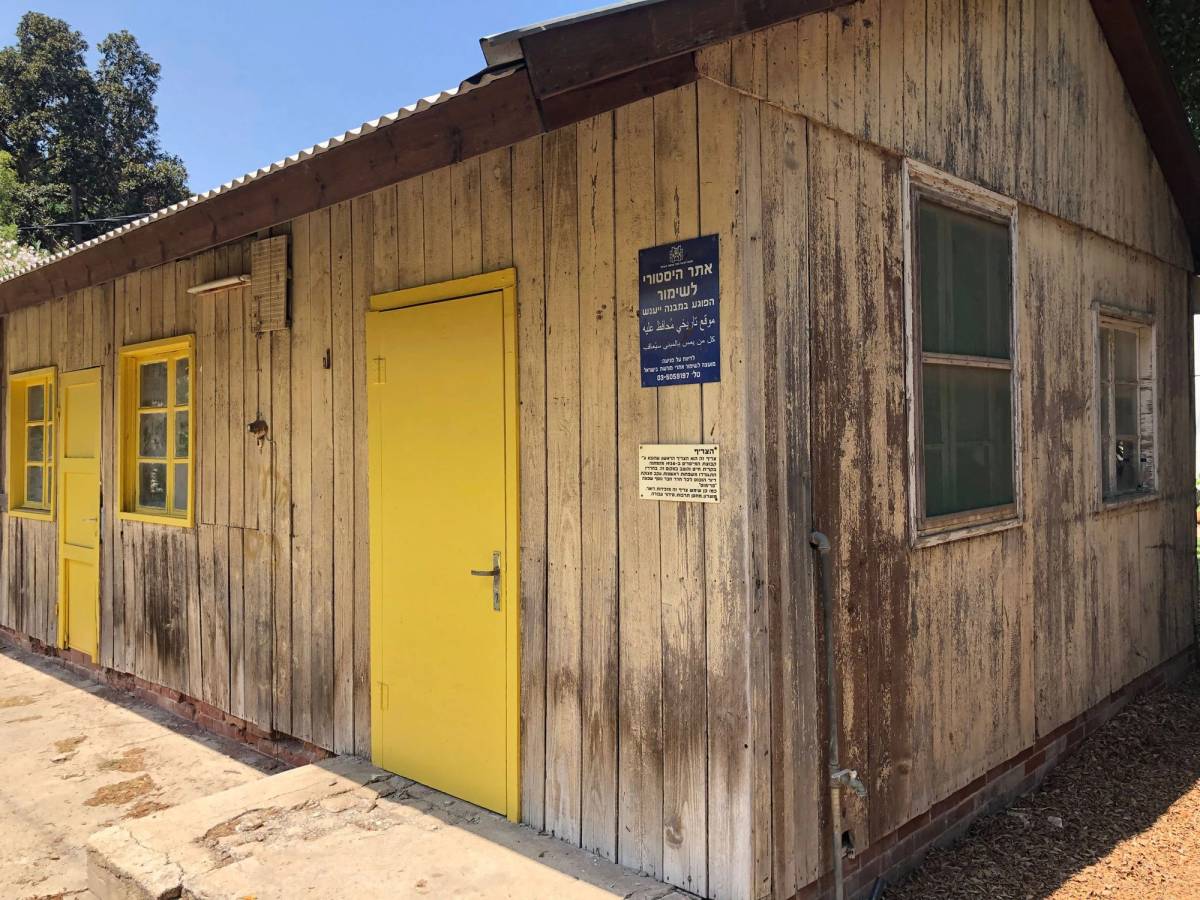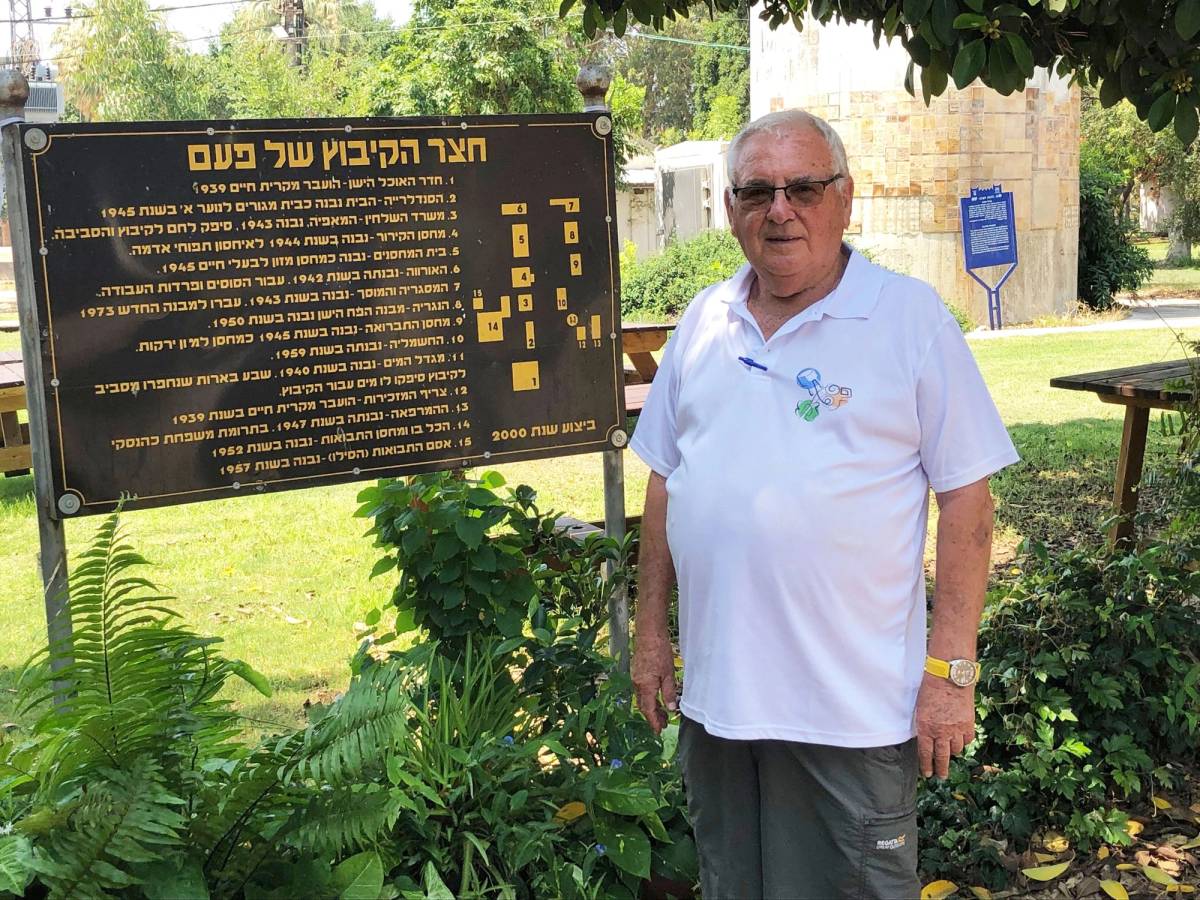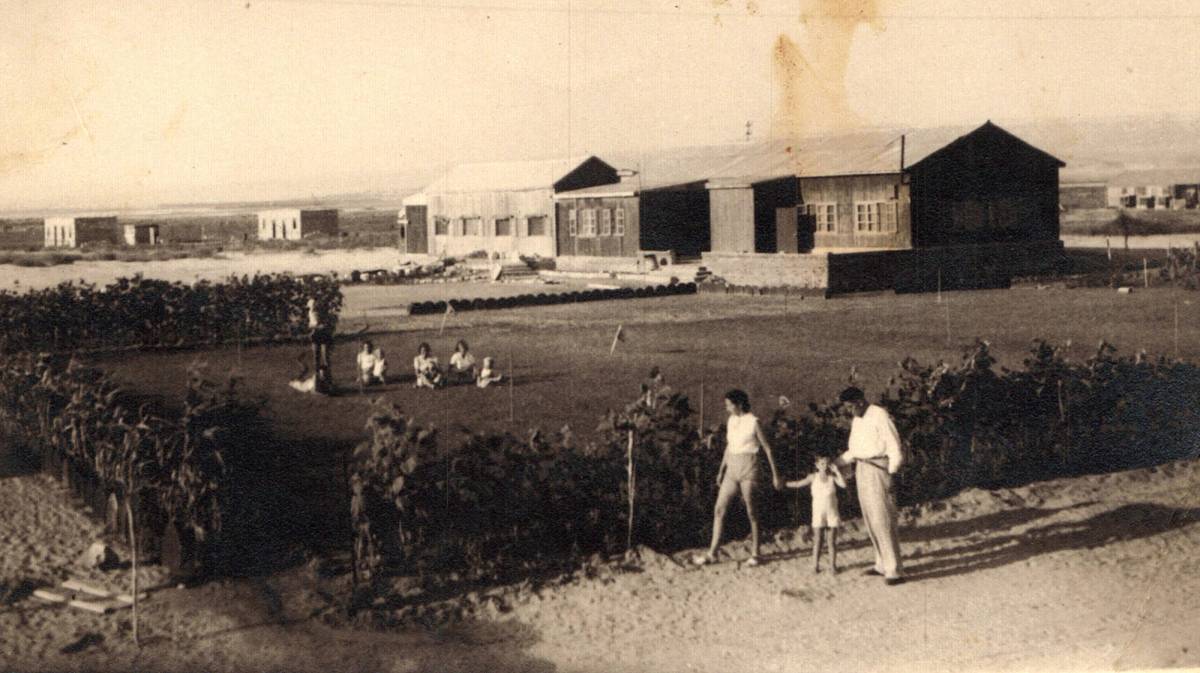Turning a Kibbutz Into a Tourist Attraction
Kibbutz Kfar Masaryk is a finalist for a United Nations designation that could draw visitors to its historic grounds in northern Israel

Miller Prosser via Flickr

Miller Prosser via Flickr
On a July day in the dining room of Kibbutz Kfar Masaryk in northern Israel, Hagar Hazan, 78, was enjoying lunch with her husband and two friends. Men wearing blue T-shirts whose lettering marked them as kibbutz farmhands chowed down at another table. A group of children parked their bicycles outside, scampered into the hall, snatched trays from a cart, and selected their meals from bins of salads, main courses, and side dishes.
The din gladdened Hazan, a native of the kibbutz who moved in 1980 to Los Angeles and still lives there. She’s remained close with many friends from her Kfar Masaryk days. In retirement, the Hazans spend three months every year at the kibbutz.
Hazan ticked off what she’s always loved about the place: its pastoral environment, the close friendships the small community fosters, the organized activities, everyone celebrating Jewish holidays together, and the dining room’s drawing people for meals and meetings.
Those facets persist at Kfar Masaryk despite widespread privatization in the 1990s that radically changed kibbutzim from socialist enclaves to mainstream villages.
“The kibbutz is like a big family,” Hazan explained.
Now, Kfar Masaryk, home to 750 official members, is poised to welcome many more people—as tourists, if not as residents. That’s because it’s a finalist for the United Nations World Tourism Organization’s designation of villages of a maximum 5,000 residents whose heritage and cultural importance make them special tourism sites. The UNWTO will announce its picks on Oct. 25.
In two annual selections since launching the competition in 2021, the UNWTO has designated 76 places in 38 countries as top tourism villages. One is in Israel: Kfar Kama, predominantly Circassian, in the Galilee.
Two additional Israeli candidates are competing this year: the Druze village of Pekiin and the Ein Hod artist colony, both also in the Galilee. A country may offer up to eight nominations annually, and more than one may be selected. UNWTO has received 260 applications from 60 countries in 2023, said Megha Paul, a senior communications specialist at the organization.

Courtesy the author
Earning the UNWTO’s designation is bound to benefit Kfar Masaryk and the immediate area economically and through higher prestige, said Oshrat Zehavi, chief executive officer of the Tourism Association of the Western Galilee, who hopes for increased hotel and restaurant bookings and spinoff visits to museums.
“If Kibbutz Kfar Masaryk wins, it will bring greater exposure to the area, and this will be good for everyone,” said Zehavi, who lives on another kibbutz, Gesher Haziv, a few miles north. “It will give energy to the region and motivation to develop further.”
Zehavi said the U.N.’s seal of approval for Kfar Masaryk, along with other local attractions—beaches, the ancient city of Akko, and Rosh Hanikra’s gondolas and grottoes—could encourage tourists to linger in the area for multiple days rather than quickly depart for Tiberias and the Sea of Galilee an hour’s drive east. Her U.N. application included a slideshow and video of Kfar Masaryk.
Einav Reiz, who manages the kibbutz’s 20-room hotel, already has witnessed the impact. The hotel operated at 70% occupancy for the year, but since word of the kibbutz’s advance to the final leaked in late June, “the phone has rung off the hook,” she said, from people eager to reserve rooms for the fall holidays.
“I think it will be crazy,” said Reiz, a Kfar Masaryk native.
In interviews in Hebrew for this article, several experts who live elsewhere used the English word “unique” to describe Kfar Masaryk.
I’ve ridden past Kfar Masaryk multiple times without visiting, never imagining that this kibbutz stood out. The place has long triggered in me curiosity over its being named for a foreign leader, Czechoslovakia’s first president, Tomas Masaryk, and sadness, recalling Palestinian terrorists who decades ago kidnapped and murdered a soldier hitchhiking home to her kibbutz.
I visited Kfar Masaryk in July and discovered what makes the place unique among Israel’s 270 kibbutzim: a bathroom.
On a grassy patch stands a concrete shack whose entrance is blocked by wire. Inside, dilapidated wooden doors are visible, its red letters designating BOYS and GIRLS. A single sink hangs opposite the doors. An exterior wall bears a blue sign from the Society for Preservation of Israel Heritage Sites. It reads: “Historical site to be preserved. Whoever damages the structure will be punished.”
I wondered how many bathrooms worldwide carry historical recognition.
Such signs mark 28 structures throughout Kfar Masaryk. All eventually will be renovated and open to visitors, but “it could take 20 years—it costs money,” said Benny Barak, a retiree who emigrated from Romania at age 13, married a kibbutz native, stayed, and now leads tours of the grounds.

Courtesy the author
In his younger days, Barak explained while driving a golf cart around the grounds, residents of each cluster of tents and huts—there weren’t yet many houses—on the kibbutz were assigned a bathroom in a separate building. Eventually, the latrines were razed, except the one kept around to attest to days gone by.
Another sole survivor is the shower room across the way. It served its purpose until the 1970s, when all houses had gotten their own. “When I was first married, I didn’t have a shower [at home]. I’d go there, maybe 200 meters from home,” Barak said.
Kfar Masaryk’s layout and look typify scores of other kibbutzim: overhanging trees shading long, flat, one-lane roads leading in from the main gate; handsomely landscaped lawns; vehicle-free residential zones reached by walking paths; simple, one-story buildings; children walking without a care in the world; bicycles sprawling haphazardly; and older structures dating to the kibbutz’s move to this plot in 1938 from across present-day Highway 4, soon before renaming itself in 1940—it was called Czecholita for its founders’ coming from Czechoslovakia and Lithuania—for Masaryk. Like most kibbutzim, Kfar Masaryk generated revenue from agriculture and its factories, and still does.
This kibbutz, situated beside the main road connecting Haifa and Akko, saw potential in its ordinariness to a degree others didn’t.
It preserved enough of itself, physically and lifestyle-wise, to constitute a package of kibbutz-nostalgia tourism. Nearly all kibbutzim privatized following a nationwide economic crisis in the 1990s, ending such unique features as the communal raising of children and communal property ownership. Residents of many kibbutzim now could keep the outside salaries they earned. People bought their own groceries, prepared their own meals, and ate at home, so dining rooms shuttered; in those that remained, diners paid for their meals.
The kibbutz movement’s shift deepened the longing for a faded era and for an Israeli institution—and that’s what Kfar Masaryk identified.
“What’s special is that, out of a love for their place, they recognized that there’s a story to tell,” said Omri Shalmon, CEO of the heritage-sites society. That draws tourists interested in “seeing life as it was lived before,” said Moti Zeira, a historian specializing in kibbutzim who lives on Kibbutz Givat Haim Ihud.
While Kfar Masaryk banks on the past, it looks to the future—what Efrat Peled Sade, who lives on the kibbutz and works as its tourism manager, said is “making the kibbutz of old and the kibbutz of today accessible.”
Kfar Masaryk has been encouraging its young people who’d left for the big city—a common challenge for kibbutzim—to return, offering subsidies for homes they build and finding them work on-site if that’s what they seek. Forty such households, she said, have returned in about the past decade.
“The main idea was to make the kibbutz younger, to grow the next generation,” Peled Sade said.
As to Kfar Masaryk’s physical-preservation efforts, Barak said one impetus was the passing in 2008 of the kibbutz’s last remaining shoemaker, Yitzhak Krauser, 95, who worked until age 90.

Historic Collection/Alamy
“When he died, we realized we have many buildings that should be preserved because of their historical value,” Barak explained in the cobblery workshop, sitting below a framed photo of an elderly Krauser at work.
In front of Barak rested a large, square table packed with tools, some dating to the shop’s opening in 1945 and used by Kfar Masaryk’s shoemakers to fill the community’s needs. Before Rosh Hashanah, each kibbutz resident received a pair of leather shoes (brown for males, red for females); before Passover, sandals.
It is one of five attached workshops across from the original water tank that’s still dotted with personalized tiles from 1983 celebrating Kfar Masaryk’s golden anniversary. Barak randomly removed an index card for Yaakov “Kuban” Leibel, with entries going back to 1946: the dates he received work shoes, leisure shoes, sandals, and rubber boots, and when repairs were done.
Barak wants visitors to understand how kibbutzim operated, especially in the early, austere decades. He told a visiting woman and her adult daughter that he worked many years in the kibbutz’s television-assembly plant, now defunct.
The wall behind Barak consists of bricks made at Naaman Clay Brick Works, the company Kfar Masaryk founded and where Leibel, a Holocaust survivor from Poland, worked. A Chinese company later bought Naaman and moved from Israel all of the company’s operations, including its porcelain works. A room adjacent to the cobblery displays commemorative plates, tea sets, and Judaica, all Naaman-produced decades ago. Continuing to the next two rooms brought us to the reconstructed tailoring and carpentry operations.
Plans are afoot to renovate the bakery building around the corner, although the ovens and other implements are long gone. Next to the bakery, a former warehouse, arched with Naaman bricks, serves as the visitors center. Guests watch a 20-minute video and can try on work clothing that kibbutzniks once wore. Kids learn about the porcelain works while painting on plates to take home. Music is played for a few minutes of folk dancing.
Approximately 10,000 visitors annually, primarily Israelis, partake of Barak’s 30-minute tours of the crafts buildings and his 90-minute tours, dubbed “The Magic of the Kibbutz,” that also cover walks to the dining room, art gallery, residential areas, and hotel.
Near the hotel, buildings still stand where children were raised apart from their parents, whom they saw for two hours each afternoon. Hazan said she remembers the experience fondly. The practice was ended decades ago at Kfar Masaryk and nearly every other kibbutz. But in 2010 Kfar Masaryk members insisted on maintaining the dining room, where residents continue to eat breakfast, lunch, and Shabbat dinners together and where visitors are encouraged to join them. Outside the building is a roped-off rectangle once part of the floor of the previous dining room, built in 1940.
Two Haredi families visiting from Brooklyn stopped at the floor after exiting the dining room, empty in the late afternoon.
“It’s interesting but sad,” said Gelly Schnitzler. A kibbutz “is not a sustainable lifestyle,” she said, and lacking personal ownership of property was “a wrong way of living.”
Her husband, Chaim, had never been to a kibbutz before. “I’m very interested in how people live. It’s very different than our lives,” he said.
But surveying his and his friend’s large brood of children and counting out a wad of shekel currency to pay Barak for everyone’s 90-minute tour, he added: “Maybe we should do it in New York: to only have the kids for two hours a day.”
Hillel Kuttler, a writer and editor, can be reached at [email protected].